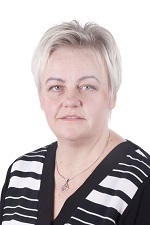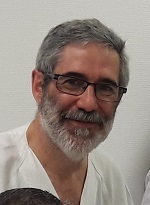Report from the Head & Neck and Skin GEC-ESTRO working group (HNS WG)
The Groupe Européen de Curiethérapie (GEC)-ESTRO Head & Neck and Skin working group (HNS WG) consists of a core group of 46 members from 19 countries in Europe, Asia, America and Africa. The group is involved in a range of projects in the fields of clinical practice, research and education. The HNS WG is led by Luca Tagliaferri, who is supported by two secretaries, Angeles Rovirosa and Agata Rembielak. To arrange activities, three task-specific groups are defined within the group, namely the:
- Head & Neck task group, which is led by José Luis Guinot;
- Skin task group, which is led by Agata Rembielak; and
- Eye task group, which is led by Benjamín Guix Melcior.
The main aims of the HNS WG are to propose and coordinate research projects that gather and analyse clinical evidence to harmonise clinical practice in HNS brachytherapy (interventional radiotherapy). The group focuses on implant techniques and quality assurance (QA) procedures, image-guided radiotherapy, 3D treatment planning, dose prescription, and dose constraints for organ-at-risk evaluation and the quality of patients’ lives. The principal research project of the group is the consortium for brachytherapy data analysis (COBRA). COBRA is an international research network for interdisciplinary, standardised data collection in the fields of head & neck, skin and eye brachytherapy. It is based on a purpose-built, web-based platform that is used to share clinical data safely and anonymously. The data can be used in retrospective studies and prospective clinical trials. Currently, the consortium is composed of 19 international institutions. In the frame of the COBRA system, the working group is currently focusing interest on the collection of treatment data for skin cancer, especially periorificial lesions, and for the validation of multicentre predictive models for eye maculopathy and vision loss.
The HNS WG also supports the trial entitled the prospective registration study of brachytherapy as a single modality in the treatment of cancer of the nasal vestibule: optimisation of dose and technique (BRAVO). This trial aims to confirm in large series the advantage of the use of interventional radiotherapy in this kind of tumour in terms of local control, toxicity, aesthetic outcomes and cosmesis.
To harmonise clinical practice, several members of the HNS WG have been involved in writing relevant chapters of the second edition of the GEC-ESTRO Handbook of Brachytherapy. Also, the group has started a project to update the GEC-ESTRO head & neck guidelines, published in 2017, and the GEC-ESTRO skin guidelines, published in 2018. To improve QA and to standardise skin practice, the group also published its critical review of recommendations regarding prescription practices in skin brachytherapy (Gonzalez-Perez, Victor, et al. “H&N and Skin (HNS) GEC-ESTRO Working Group critical review of recommendations regarding prescription depth, bolus thickness and maximum dose in skin superficial brachytherapy with flaps and customized moulds”; Radiotherapy and Oncology 175 (2022): 122-132. doi:10.1016/j.radonc.2022.08.022). This publication aimed to assess the existing guidelines for the use of superficial brachytherapy to treat non-melanoma skin cancer and to provide a critical review based on the published clinical practice regarding the maximum dose prescription depth, bolus thickness and maximum dose to the skin surface (Dmax). Our review verified that there was a large variation among centres with regard to clinical practice in superficial brachytherapy, and it identified studies in which published parameters such as maximum dose prescription depth, bolus thickness and Dmax had exceeded the constraints recommended in the guidelines, even though the studies showed excellent results in terms of local control, toxicity and cosmesis. The HNS GEC-ESTRO WG considers now that is acceptable to prescribe a superficial brachytherapy dose at a depth of more than 5mm beyond the skin surface, to modify the bolus thickness to optimise the treatment plan and to adjust the acceptable maximum dose to the skin surface, all depending on the clinical situation. Moreover, HNS WG has recently initiated a project on the decision-making process in postoperative external beam radiotherapy and brachytherapy in skin cancer. Currently, there is a variety of non-uniform country or society-specific guidelines that address this issue. As a result, clinicians must make clinical decisions despite gaps in evidence-based practice. We hope to gain invaluable insight into how European experts in the field make such decisions in cases for which there is poor research evidence.
HNS WG is committed to educational issues and many of its members are involved in international teaching activities. The most important in this field are the ESTRO course on multidisciplinary management of non-melanoma skin cancer and the ESTRO-endorsed multidisciplinary course on head & neck interventional radiotherapy. In addition, in cooperation with national societies, several group members participate regularly in various onsite educational events. For instance, during ESTRO 2022 in Copenhagen, the group delivered its first pre-meeting course on skin brachytherapy, which received excellent feedback.
On behalf of the HNS GEC-ESTRO WG, Luca Tagliaferri, Agata Rembielak, José Luis Guinot

Luca Tagliaferri

Agata Rembielak

José Luis Guinot